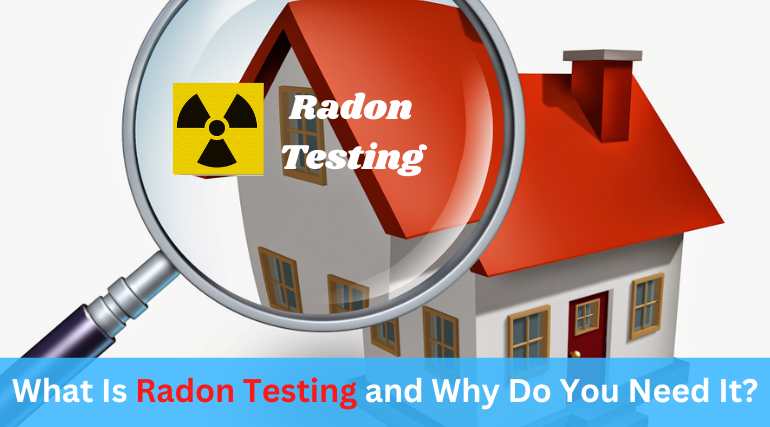Radon is an odorless, colorless radioactive gas mostly present in the soil that can seep into your home. According to CDC, prolonged exposure to radon gas can cause lung cancer, and the Environmental Protection Agency estimates that over 20,000 people die from radon-induced lung cancer every year in the US. As you cannot see or smell radon gas, detecting its presence in a property is difficult, so whether you are buying or selling a home, it is good to conduct radon testing.
How Does Radon Gas Form?
Radon gas forms when radioactive metals like thorium, uranium, or radium break down in the soil, groundwater, or rock.
How Can Your Home Be Exposed to Radon Gas?
The radon gas enters through cracks and gaps in the walls and floors of your home, leaving you exposed to it. As radon is formed naturally inside the earth, one cannot completely avoid it. While any home, whether new or old, at any location, can experience radon contamination, some factors can elevate the risks, such as:
- Residing in a community with high radon rates
- Radon-contaminated groundwater
- Old homes with dirt floors or homes with cracks or exposed crawl spaces
- Damaged foundation
What Is an Unsafe Radon Level?
The average indoor radon level is 1.3 pCi/L (picocuries per liter). Homes with radon levels between 2 pCi/L and 4 pCi/L must consider reducing them, and homes with levels above 4 pCi/L should take immediate action to fix them.
Why Do New Homes Have High Radon Levels?
Many new homes are susceptible to higher levels of radon than older homes because:
-
New homes are constructed to be energy-efficient to keep cold and hot air inside, and they may have high levels of radon.
-
Older homes are mostly less insulated than new homes. The lack of insulation decreases radon levels that get confined within the home.
Tips to Reduce Radon Gas in Your Home
-
Increase the airflow in your home, as radon gas gets diluted by the air.
-
Seal cracks and gaps in floors and walls with plaster or caulk.
If you are building a new home:
-
Cover your crawlspace with a plastic sheet to prevent radon gas from seeping through and entering your home. If you don’t have a crawlspace, install a gas-permeable aggregate layer under your home’s slab or flooring and cover it.
-
Install a 3-4-inch gas-tight pipe from the first layer or crawlspace to the roof to safely release radon gas to the outdoors.
A radon test will help determine whether your home has dangerous radon levels. Though you can test for radon yourself, it is good to hire an experienced and trained professional for detailed, accurate results.
Professional Radon Testing at Worthy Inspection Services
At Worthy Inspection Services, we provide effective and timely radon testing at an affordable cost. By placing continuous AARST/NRPP-certified monitors in the lowest habitable area of your home, we accurately determine the hourly measurements of radon gas in your home. Unlike other agencies that will keep you waiting for some days to get results, we provide results as soon as the test is completed, so you can act immediately.
If you are looking for radon testing in Whitefish, MT, or other surrounding areas, contact us today at Worthy Inspection Services. We will thoroughly inspect your home for radon gas and provide a detailed, unbiased report to help you make an informed decision.



Comments are closed